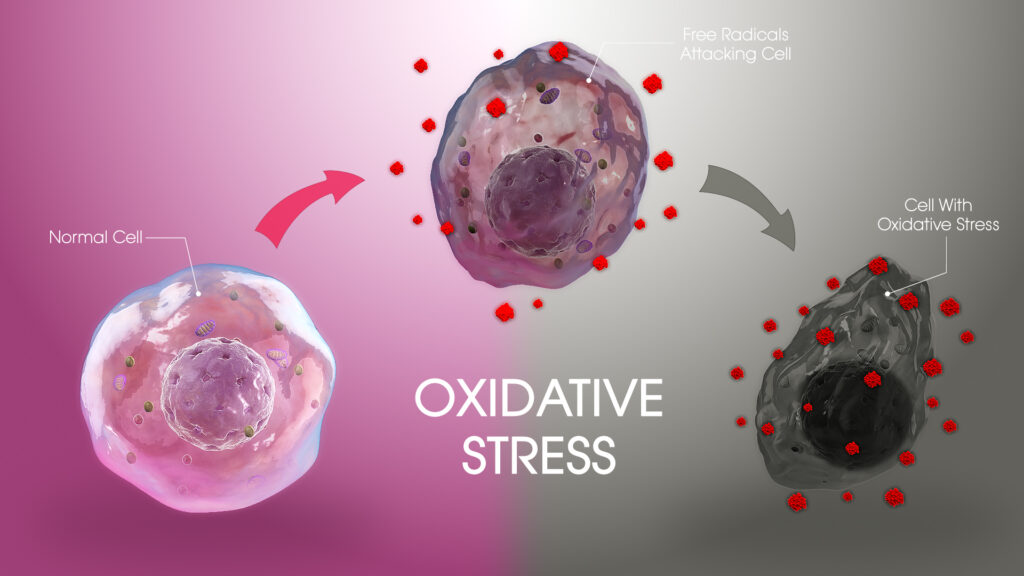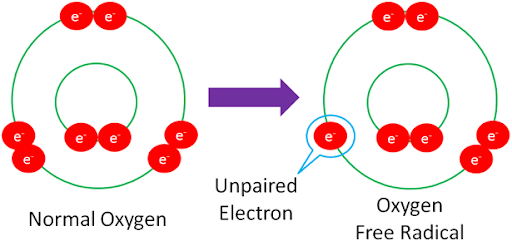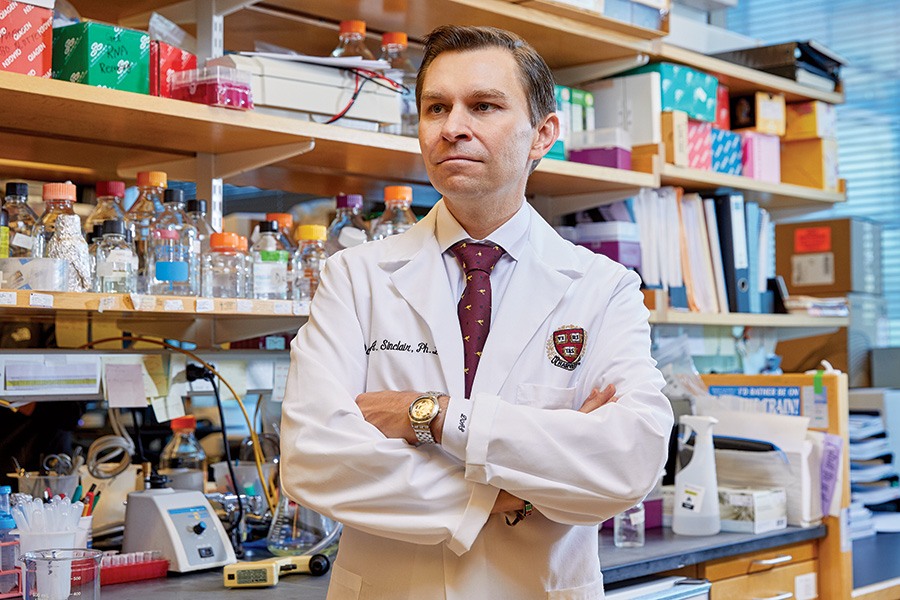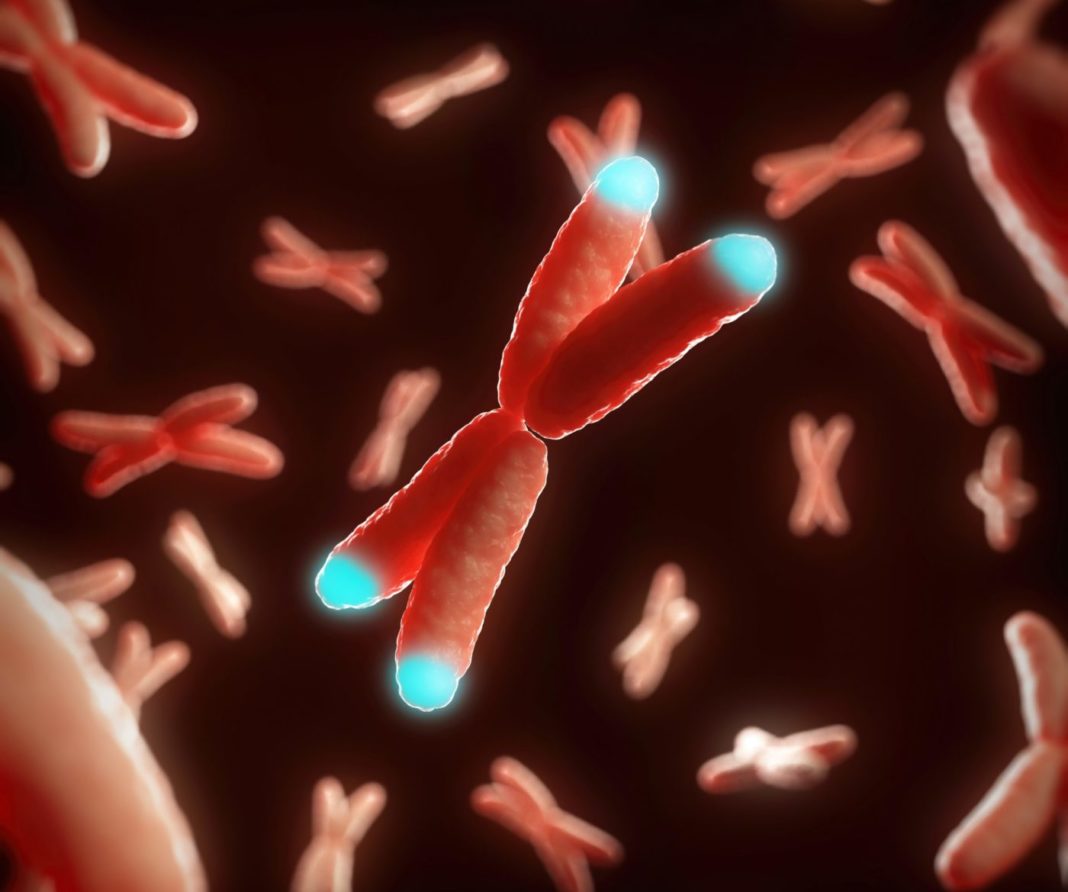Oxidative Stress: Definition, Causes, And Treatment
Science • April 7, 2022 • 15min read

Do you have a family history of any chronic disease?
Hypertension? Diabetes? Alzheimer’s? Cancer? Or perhaps, a different one?
It is probably on the list of conditions that are influenced by oxidative stress. But, of course, aging-related causes of mortality are not an exemption. Aside from genetic factors, these conditions may be triggered or accelerated by oxidative damage.
Some people might think that everyone will contract illnesses when they get old. So they just do nothing about it, but it turns out, it is possible to grow old and not have these issues. This is called healthy aging – the process of continuous maintenance and improvement of overall health and vitality throughout life, even at old age.
Many people in the aging population do not reach the state of healthy aging. And oxidative stress is one of its biggest roadblocks.
Ameliorating oxidative stress is one of the key methods to optimizing healthy aging. Here, we talk about what oxidative stress is, its causes, and how to prevent or treat it.
What is Oxidative Stress?
Oxidative stress is the physiological imbalance of free radicals and antioxidants in the body, leading to many disease states. It happens when there are too many free radicals that overwhelm the body’s antioxidant defense system. This causes deleterious effects on cells and the organ systems to which the damaged cells belong.
Preventive measures for oxidative stress include diet and lifestyle modifications. This includes taking supplements such as nicotinamide mononucleotide (NMN), a stable and reliable activator of Sirtuins and booster of NAD+. Although treatment modalities for oxidative stress are currently being studied, they show promising results in combating oxidative stress.

Oxidative Stress And Free Radicals
Normally, free radicals are produced by our cells as by-products of metabolism. Or they are used by our body for important cellular functions such as
- Launching a destructive attack on infectious microbes like bacteria and viruses
- Regulating cellular communications
- A signal for cell division and proliferation
Free radicals are chemicals that are generated either from environmental sources or are produced by our cells. But they have unpaired electrons in their structure, making them unstable and highly reactive.
Reactive oxygen species (ROS) are free radicals that are most associated with cell injury. Because of its nature, it readily steals electrons from other molecules nearby to stabilize its unpaired electron.
When this happens, it causes the source of the electron to become a free radical as well which in effect will also steal electrons to stabilize it. This process results in a free radical chain reaction of electron gain and loss and then induces damage to the cells and their components in the process.

An illustration is when oxygen loses an electron in its structure casing the generation of unpaired, unstable reactive free radicals Image source
To keep them in check, cells also have a mechanism to prevent this through antioxidants – molecules that scavenge the free radicals by donating their extra electrons, thereby stabilizing or neutralizing them.
At high concentrations, free radicals attack important cellular structures such as cell membranes, lipids and proteins, and even our DNA. At low to moderate concentrations, however, free radicals are important in the maintenance of the healthy functioning of the human body. Examples of these include:
- Immune attack – The body uses ROS to fight off pathogens. ROS are generated by a specialized group of immune cells called phagocytes.
These cells employ their pathogen-killing actions by engulfing the microbes and destroying them by using ROS. Since some microbes don’t have built-in antioxidant systems to neutralize ROS, some infections are easily resolved through this process.
- Cell signaling – Free radicals can oxidize proteins by causing a change in their structure and activity, and by altering their function on signaling pathways.
For example, if the affected protein is involved in a signaling process that sustains the functions of the heart, then it could lead to heart failure.
- Cell division and proliferation – ROS have also been found to activate the pathways that trigger a cell to divide and proliferate. Cancer-derived ROS can fuel cancer cell proliferation.
What Causes Oxidative Stress?
ROS are controlled by antioxidants. They are scavenged before they can cause damage. Antioxidants can either be naturally produced by our cells or can be taken from food.
Therefore, if these two sources of antioxidants become compromised, the antioxidant levels decrease. And then free radicals keep rising and damaging ultimately leading to oxidative stress.
ROS may come from endogenous (internal) or exogenous (external) sources.
- Endogenous ROS are produced inside the body during some cellular processes. During energy metabolism, cells generate ROS as waste products. During infection, cells produce ROS to kill the microbes. During heart inflammation, abnormal immune cells release ROS that damage the blood vessels (which can lead to aneurysm formation).
- Exogenous ROS, on the other hand, are generated from outside of the body but get ingested and absorbed. For example, during deep-fry cooking, the fats and oil heated to high temperatures become oxidized creating free radicals.
Another reason is cigarette smoke containing free radicals which, when saturating the lungs, cause tissue damage and trigger respiratory diseases.
In addition, alcoholic beverages are also a harmful source of free radicals. When the alcohol is ingested and metabolized in the liver, ROS sharply increases which can damage and scar the liver leading to a disease known as liver cirrhosis.
| Endogenous Sources | Exogenous Sources |
|
|
How Oxidative Stress Causes Disease?
As previously described, oxidative stress may be a primary cause of the disease by inducing a direct oxidative injury to the cell through the oxidation of its structures and macromolecules. This activity damages cells or changes their structure and function. Diseases that are heavily influenced by oxidative stress include
- Radiation-Induced Lung Injury – Radiotherapy against lung and esophageal cancer can induce lung pneumonitis (inflammation of the lung tissue) as its side effect.
This is due to the generation of hydroxyl free radicals when exposed to radiation. Hydroxyl free radicals cause oxidative damage to the lung cellular components and induce inflammatory reactions that eventually lead to cell death.
- Paraquat Poisoning – Free radical-driven injury also results from ingestion of paraquat. Once this toxic chemical is absorbed by the lung cells, it causes pneumonitis and fibrosis (scarring of the tissue) that can eventually lead to death.
The free radicals this toxic chemical generates in the brain, can cause brain cell loss from oxidative stress and lead to Parkinson’s disease.
- Atherosclerosis – Atherosclerosis is the thickening and stiffening of the blood vessels due to the buildup of plaque (a substance mostly composed of fats and cellular waste products).
According to studies, oxidative stress play a crucial role in plaque formation as it facilitates the conversion of LDL cholesterol (the so-called “bad cholesterol”) to oxidized-LDL (oxLDL, an even worse form of “bad cholesterol”). This is the initiating event in plaque formation.
- Chronic Obstructive Pulmonary Disease (COPD) – COPD is often associated with cigarette smoking, which can bring in a lot of free radicals to the body.
These excessive oxidants can induce oxidative stress in the lung and inhibit a protective molecule called α1-antitrypsin. This is an enzyme responsible for protecting the body against the damaging effects of the neutrophil-secreted elastase molecules that can trigger emphysema or shortness of breath.
- Hypertension – Hypertension is another chronic disease with a lack of understanding of its exact etiology. But it is hypothesized to be multifactorial and dependent on factors such as lifestyle and genetics.
Research shows that oxidative stress is also associated with the development of hypertension. Markers of oxidative stress such as hydrogen peroxide (H2O2) and glutathione-related antioxidant mechanisms are significantly activated in the plasma of patients with hypertension.
- Type 2 Diabetes Mellitus (T2DM) – Oxidative stress is also linked to diabetes mellitus due to hyperglycemia (elevated blood sugar levels) and dyslipidemia (elevated levels of fat in the blood). This is correlated with increased free radicals.
Markers of oxidative stress including protein carbonyls are also increased in the plasma of patients with T2DM. These carbonyls on proteins are generated from the carbonylation process which is an irreversible oxidative modification of protein structure leading to impaired functions driven by oxidative stress
- Alzheimer’s Disease (AD) – Oxidative stress is also hypothesized to be contributory to the development of AD due to the increasing research regarding its occurrence in the brain of patients with Alzheimer’s disease.
It was observed that they have increased levels of markers of oxidative stress, oxidation of the DNA, and oxidation of proteins in several parts of the brain including the cerebrospinal fluid.
- Cancer – Oxidative stress plays a significant role in cancer cell survival and metastasis by promoting their invasive capacities.
This happens through mechanisms like extracellular matrix degradation which makes it more permissive for cancer cell migration. Additionally, cancer cells also produce more oxidants than normal cells. Note that because ROS is highly reactive, it can directly damage the DNA, cause mutations, and support tumor growth.
- Aging – The “free radical theory of aging” points to oxidative stress to be a primary mechanism that causes aging. Oxidation of proteins and fat causes these macromolecules to be dysfunctional leading to aggregation in cells.
If these defective proteins aggregate and accumulate, and do not get degraded effectively, it will negatively impact the molecular processes inside the cell. Chronic diseases associated with oxidative stress are also associated with aging as natural defenses of the body significantly weaken when a person ages.

Oxidative Stress Prevention
Oxidative stress can be reduced in various ways such as lifestyle modification, having a diet rich in foods with antioxidants, and the use of antioxidant supplements, most notably NMN formulation. These strategies are important to prevent the damaging effects of oxidative stress in the body which result in diseases and aging as previously described.
1) Lifestyle Modification
An important aspect to consider in preventing oxidative stress is to avoid practices that make us more vulnerable to endogenous and exogenous sources of oxidants.
These strategies highlight the importance of strengthening the proper functioning of mitochondria (the powerhouse of the cell). Mitochondria is also a source of ROS production during its normal activities, as well as the avoidance of the production of too many oxidants. The strategies include the following
- Caloric restriction
- Exercise
- Avoidance of excessive psychophysical stress
- Adequate sleep
2) Diet Consisting Of Foods Rich In Antioxidants
Fruits and vegetables are rich sources of antioxidants. Studies have shown that a plant-based diet helps in protecting the body against diseases related to oxidative stress. The protective effects may be due to the antioxidants or a combination of these effects with the other substances found in fruits and vegetables.
Nevertheless, it is good to consider having a diet rich in these foods to help boost your antioxidant defenses:
- Foods rich in vitamin E such as almonds and avocado
- Foods rich in carotenoids beta-carotene and lycopene, such as carrots and tomatoes
- Foods containing selenium such as Brazil nuts and fish
- Foods containing zinc such as beef, poultry, seafood, and fortified cereals
- Foods with phenolic compounds such as quercetin, catechins, resveratrol, among others
- “Superfoods”, refers to foods with high levels of antioxidants, such as blueberry, quinoa, chia seeds, and kale.

3) Antioxidant Supplementation
Aside from foods rich in antioxidants, providing the body with an additional source of antioxidants through taking oral dietary supplements is also helpful in maintaining normal and healthy functioning of the body.
These antioxidant supplements contain a safe amount of the antioxidant metabolites present in foods. Hence, in combination with a healthy diet and lifestyle, taking antioxidant supplements helps to boost the body’s barriers against oxidants to combat oxidative stress.
4) Use Of NMN Formulation
Nicotinamide mononucleotide (NMN) formulation is a supplement that helps fight signs of aging and promotes the maintenance of a healthy body. Also, NMN is acting as an additional source of building blocks for the production of nicotinamide adenine dinucleotide (NAD+). In its turn, NAD+ is an important molecule for the proper functioning of energy metabolism and, most notably, in fighting oxidative stress.
Aside from acting as an antioxidant, NMN supplements have other benefits like promotion of better cardiovascular health, improvement of musculoskeletal endurance and strength, improvement of cognitive functions, and possible prevention of obesity.
Clinical trials on the safety and efficacy of NMN are still undergoing. But initial results are promising. To date, no known toxicity and major side effects have been noted in humans taking NMN formula. And the first human clinical trial in Japan showed that NMN dosages of up to 500 mg may be safely administered by humans.
It is also believed that 1 gram of NMN supplement a day may be the optimum dosage for humans to maximize its benefits, similar to the other NAD boosters that are also available and are also undergoing clinical trials.
Oxidative Stress Treatment: The Promising Path Of Antioxidant Therapy
To fend off free radical oxidative damage, our cells have built-in detox mechanisms of an antioxidant defensive system that primarily involves enzymes like the below to convert free radicals to safer chemical forms:
- Superoxide dismutase (SOD) – SOD is an enzyme that converts the superoxide-free radicals into oxygen and the less toxic form of hydrogen peroxide. With SOD, this process becomes 10, 000 times faster.
- Catalase (CAT) – CAT is an enzyme that converts hydrogen peroxide into oxygen and water, wrapping up the detoxification process initiated by SOD.
- Glutathione peroxidase (GPx) – Like CAT, the GPx can grade the SOD by-product hydrogen peroxide into oxygen and water. Additionally, it has further detoxification ability by converting peroxides to alcohol and oxygen.
The principle of antioxidant therapy is built around the attempt to strengthen these cellular strategies against oxidative stress by employing the following
- Antioxidant enzyme mimic – The discovery of mimetics or compounds that can mimic the ability of enzymes with antioxidant properties have promising therapeutic potential.
This includes the compounds metalloporphyrins and manganese cyclic polyamines mimetics for SOD and SOD-catalase, respectively. And then ebselen which is a widely-studied mimetic of glutathione peroxidase.
- Chelation of iron and copper – Iron and copper may contribute to the production of the hydroxyl (•OH) free radical. Inhibitory chelators or chemicals that can bind them may be used to neutralize the toxicity of these metals by allowing them to be converted into forms that can be excreted, making it a promising strategy.
However, since iron is important in the body, the application may be limited only to people with iron overload conditions like sickle cell anemia.
- Increasing glutathione concentrations – Glutathione, the main antioxidant of the human body that is produced in the liver, is decreased during oxidative stress, suggesting the overwhelming effects of free radicals.
Hence, approaches to increase glutathione concentrations are also a good aspect of antioxidant therapy. This entails the provision of precursors necessary in the production and metabolism of glutathione, such as n-acetylcysteine, a rate-limiting compound in this process.
- Induction of NRF2 signaling – NRF2 signaling is important in the production of antioxidant enzymes.
Since the impaired NRF2 pathway is associated with diseases caused by oxidative stress, regulation through its activation is a good therapeutic strategy that scientists are currently studying and NMN has been associated with the activation of this signaling process.
Final Words
ROS is very important for many cellular processes if it is under control. However, if it causes oxidative stress, it can be the trigger to the onset of several diseases.
The odds are we might not know about the existing oxidative stress that is already on the brink of deterioration until one day it becomes a disease. Fortunately, treatment strategies have been identified by scientists, giving us the options to reverse oxidative damage to our cells and tissues. These include preventive measures such as diet and lifestyle changes as well as treatment methods that are already undergoing clinical trials.
We know that oxidative stress can trigger chronic diseases. But it can also be controlled. Many people are not familiar with – or choose to ignore – the debilitating effects of oxidative stress. And then sooner or later, succumb to its dangers.
But why wait for chronic diseases to kick in, make you suffer, and take a huge toll on your life when you can manage them? For this reason, supplements are one of the best solutions to reach a healthy aging state.
NMN is notably a safe and effective supplement to increase the amounts of NAD+. It is an important regulator of cellular metabolism, energy production, DNA repair, and signaling processes. NAD+ can induce cellular repair and oxidative stress resistance to attenuate the oxidative source of cellular aging.
The ultimate form of medicine is not the cure – it is the prevention. And do you know what is the best form of prevention? It is by taking action at the earliest possible time when the damage is not yet done.



